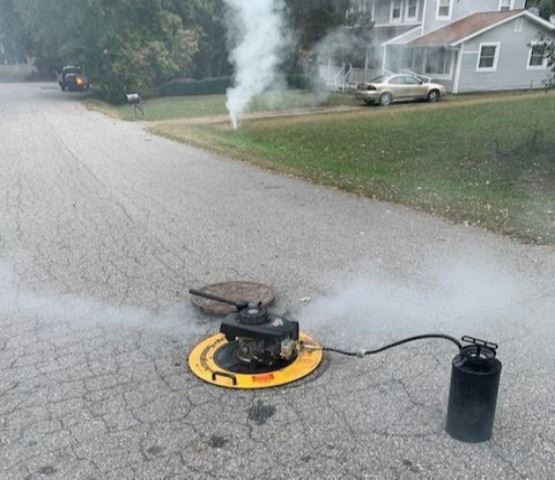Smoke testing involves forcing non-toxic smoke-filled air through your sewer lines and observing any areas where the smoke comes out where it’s not supposed to. If openings exist for the smoke to follow, smoke tests are effective, regardless of surface type, soil type, or how deep your sewer line is.
Dye testing is a simple process where dye tablets or powder is mixed with water and flushed through cracks, sink holes or storm sewers. It is typically used in conjunction with CCTV equipment as a method to identify the point of connection after the initial smoke test. Identifying the point of connection is critical to creating a cost effective plan for repairing the issues found during smoke testing.


Why CIT Sewer Solutions Offers Smoke and Dye Testing
Smoke coming out of the ground may indicate a break or defect in your sewer line, which is allowing smoke to escape up through the ground. However, smoke doesn’t always originate at the spot the smoke emerges. Sometimes, the smoke will escape through a defect in the sewer line, then travel or migrate along the outside of the pipe until it finds a way to the surface. Either way, a smoke test will rule out whether or not your sewer line is cracked, leaking or has an illegal connection.
Benefits Of Smoke Testing and Dye Testing
Smoke testing and Dye testing are the most efficient and cost-effective ways to locate and identify leaks in your sewer system. They are used nationwide as a means for locating I/I, which can lead to millions of dollars in additional wastewater treatment.
Common sources of sewer inflow and infiltration include:
